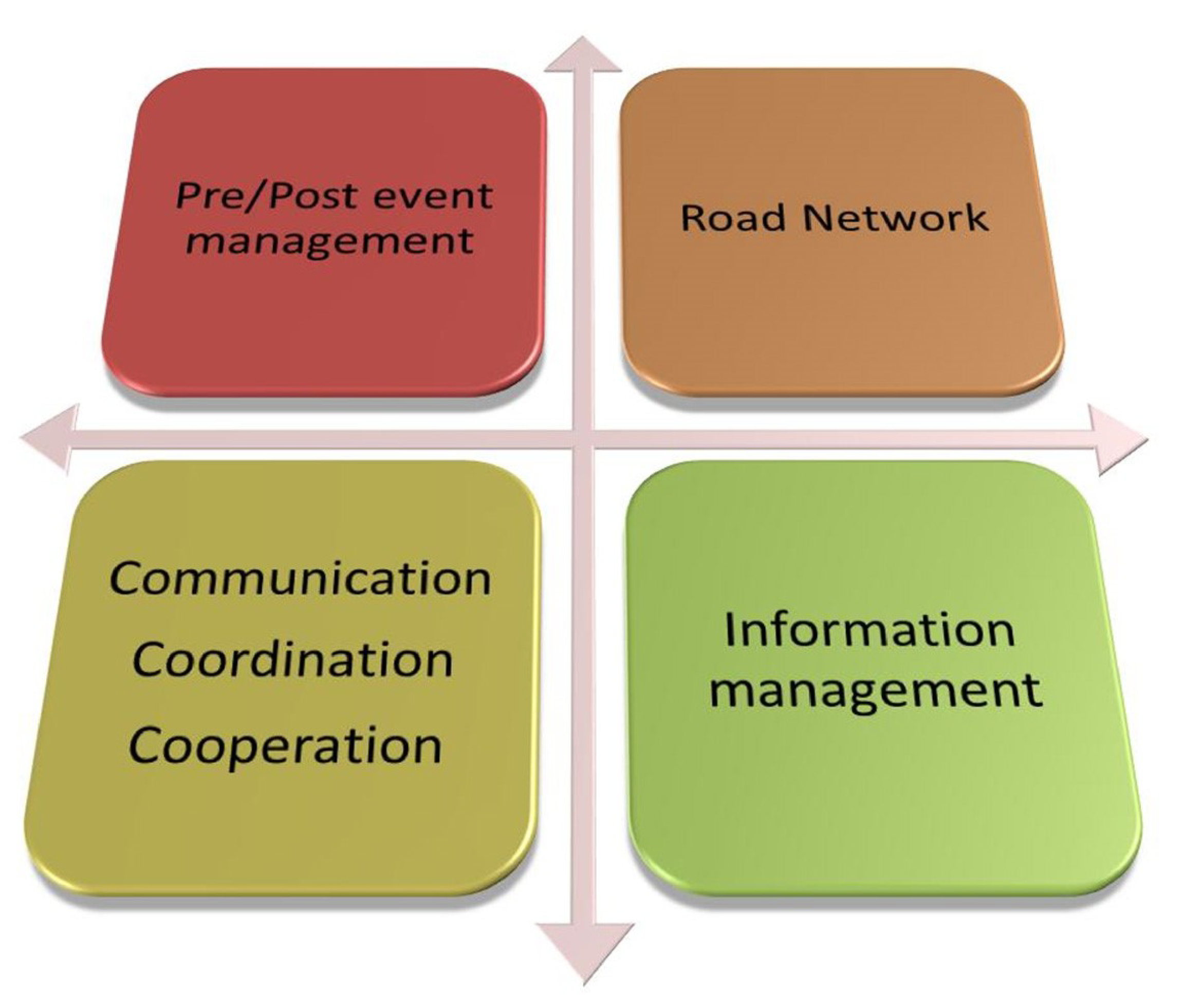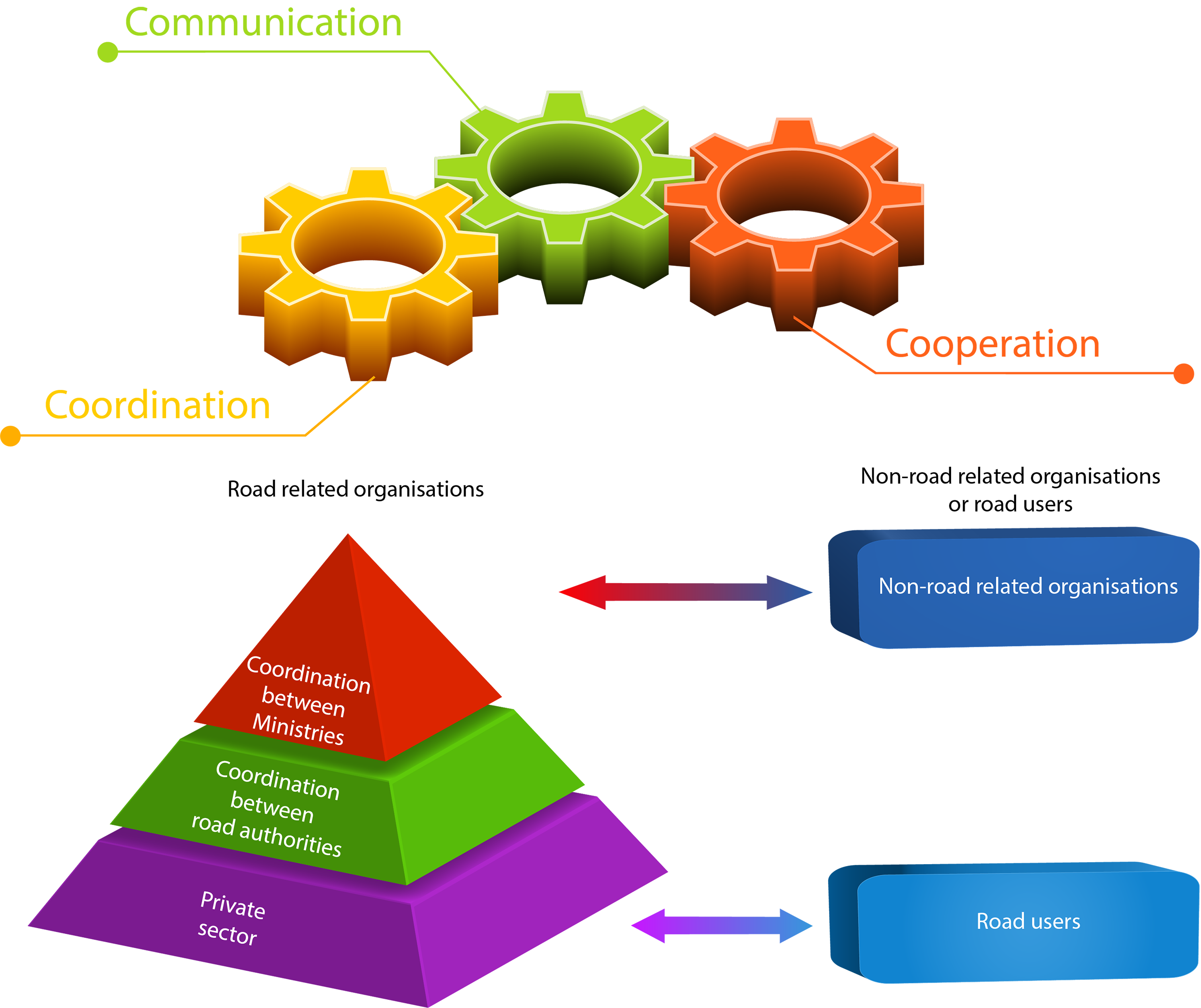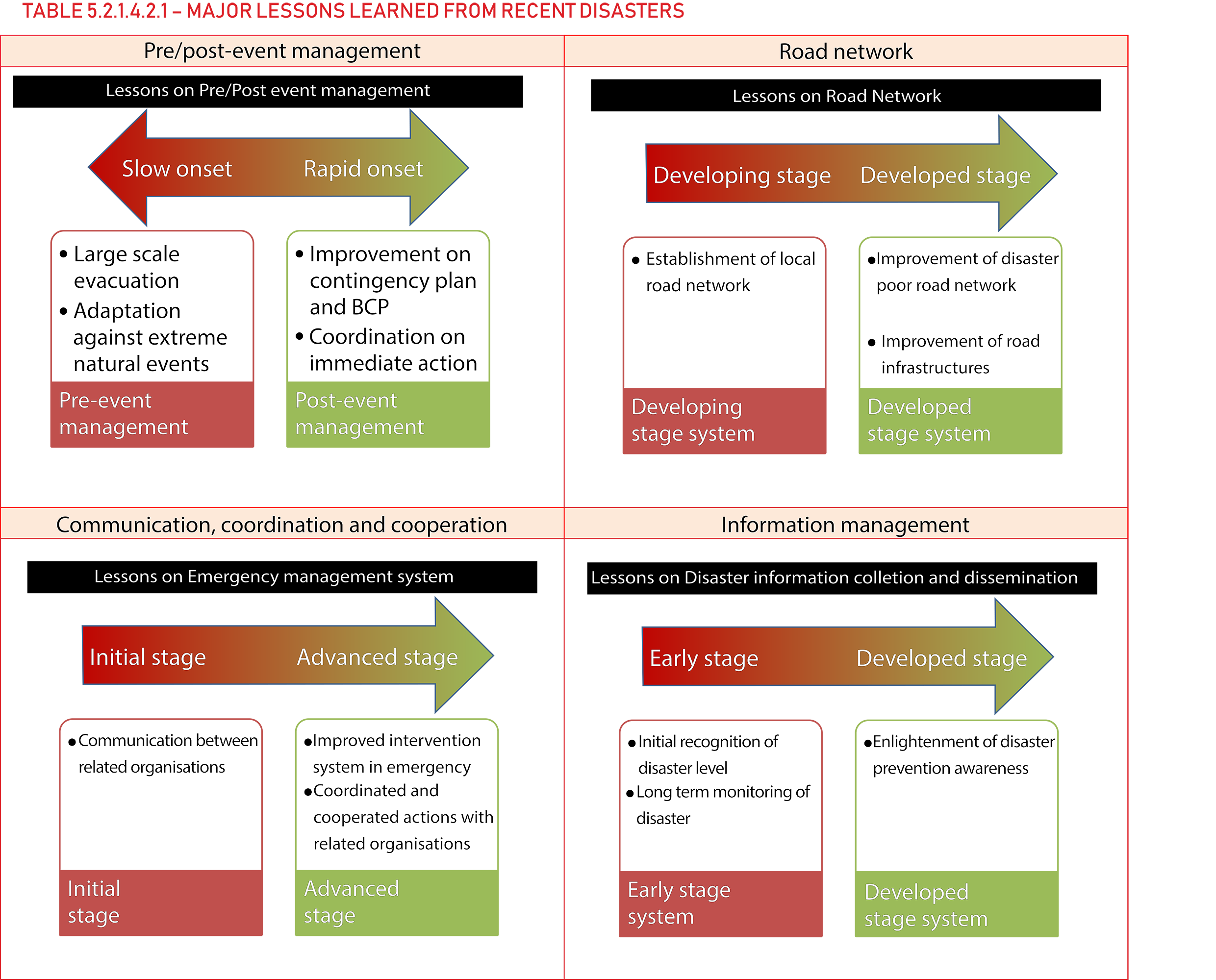
Disaster Management Manual
A manual for practitioners and decision makers!

Disaster Management Manual
A manual for practitioners and decision makers!
Major lessons collected from recent disaster experiences can be classified into four fields: Pre/post event management, road network, communication-coordination-cooperation, and information management, as shown in figure 5.2.1.4.2.1 – Field classification of case studies from International survey.

Depending on the preparedness of the affected sites, differences in disaster management are observed in each field.
There are two major hazard modes. One mode consists of slow-onset hazards such as floods, tropical storms, snow, etc., while the other mode consists of rapid-onset hazards such as earthquakes. The learned lessons are quite different between these modes. Lessons learned from slow-onset disasters are related to pre-event activities aiming to reduce or mitigate the disaster.
The most important lesson derived from the 2005 Hurricane Katrina in USA, was that there had been no preparation for mass evacuation. Mass evacuation requires coordination of several different field organizations and communication between road administrators and evacuees. Mass evacuation strategy has since been studied by FHWA and included in several references. Mass evacuation is approached from an evacuation management angle rather than traffic management.
The case of the 2007 Tabasco heavy rain event in Mexico was considered the result of the slowest onset disaster caused by climate change effects. Some engineers pointed out that this event should serve as a trigger for studies such as “Development of adaptation strategy against extreme events” and “Study on climate change effects to infrastructures”.
A redundant road network is necessary for disaster management. The derived lessons related to road network are also different between the network development levels. The major lesson is that construction of a redundant road network should be considered when designing and developing the network. For networks already under operation, major lessons derived are related to the quality of the road infrastructure (e.g. reliability and resistive infrastructure) and the standards of the road network.
In the case of the 2000 chemical spill in Hungary, the sole lifeline road was closed due to the spilled sludge for a long time. This road closure, combined with poor infrastructure of the road network, resulted in extreme difficulties in the transportation of logistics due to limited access of freight traffic to the disaster area.
In the case of the 2011 East Japan earthquake, areas hit by the tsunami were isolated due to the loss of a major road network caused by the tsunami and due to damage to local roads caused by the earthquake. High quality road network projects from now on take disaster resilience into consideration for the project cost-benefit analysis [4.2.4].
Coordination is very important in managing disasters. Coordination depends on the preparedness of the road authority, related organizations, and society. Coordination work is a process that can be enhanced by good communication among related organizations and road users, and coordination and cooperation between road and non-road related organizations, as shown in Figure 5.2.1.4.2.2.

According to the experience of the 2010 Merapi volcano eruption in Indonesia, the major lesson was the limited communication and coordination between related disaster management organizations, which resulted in poor quality of the disaster work. Communication is the first step in coordination.
Advance preparedness in coordination is to make cooperative agreements with related organizations prior to the upcoming event. According to the lessons derived from disaster experiences in Japan, most road authorities prepare such cooperative agreements not only with construction contractors and consultant companies, but also with non-road related organizations [4.2.5].
Disaster information management is very important for managing disasters. Disaster information management includes:
Lessons regarding inadequate acquisition of disaster information can also be derived from the case of the 1995 Kobe earthquake in Japan, where recognition of damage level and area in the road network was very difficult; conventional communication tools were not available because of the disaster.
Similar lessons were derived from the 2011 East Japan earthquake, where electricity-based communication and information tools were inactive because of power shutdowns due to the strong earthquake and the tsunami that followed. In the case of the 2011 Kii peninsula heavy rain in Japan, long term hazard monitoring was needed to prevent secondary disasters.
An interesting and important lesson was derived from the 2009 Morakot heavy rain in Taiwan. Even though the most advanced early warning system throughout the country was in place, public awareness was limited. This resulted in improper activation of the preparedness action that was supposed to follow based on the message delivered by the warning system. As a result, the Taiwanese government acted to further promote public disaster awareness. ITS technologies are important disaster management tools for information management and for raising public awareness.
The derived lessons from each field are summarized in Table 5.2.1.4.2.1
